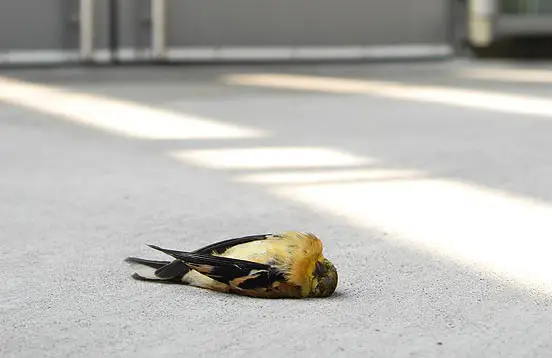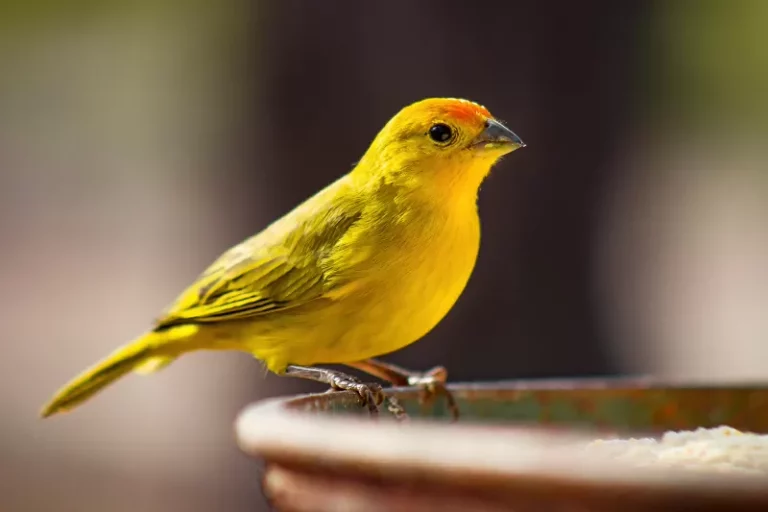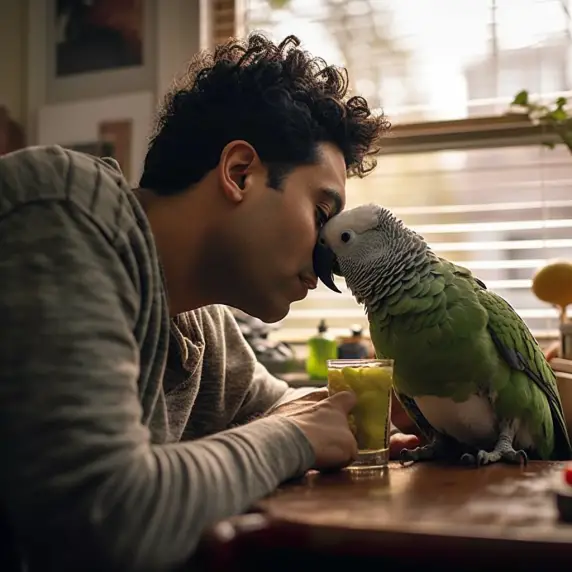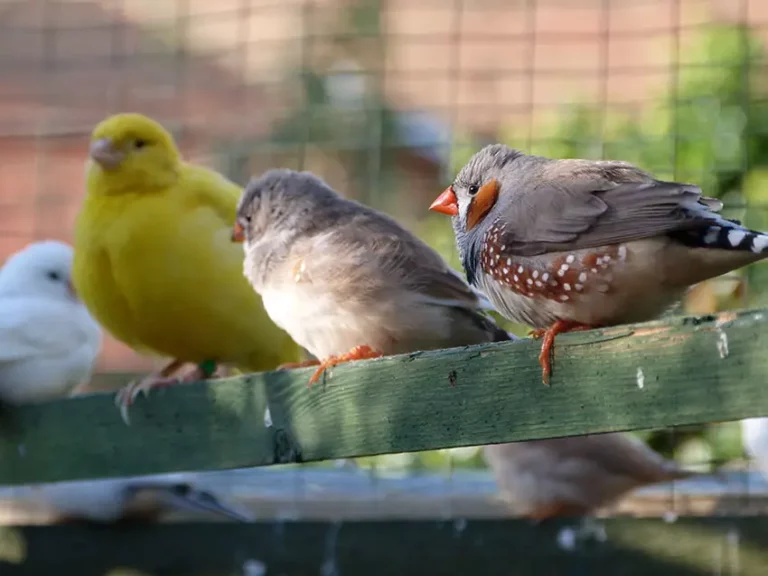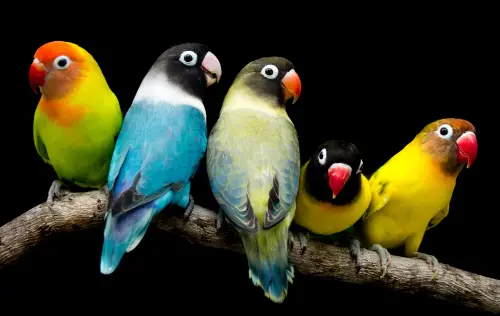A Comprehensive Guide to Potty Training Your Pet Bird
In this comprehensive guide, we’ll explore the benefits of potty training your pet bird, discuss crucial aspects of bird behavior and biology, and emphasize the importance of patience and consistency throughout the training process.
With the right approach and perseverance, you and your pet bird can enjoy a cleaner, more comfortable environment while strengthening your bond. So, let’s dive in and learn how to potty train your pet bird!
Picking the Perfect Potty Spot
When choosing a potty spot for your pet bird, consider the following factors:
- Easy access: Make sure your bird can comfortably reach the designated spot without any obstacles in the way.
- Safety: Ensure the area is secure, away from potential hazards or distractions.
- Cleanliness: The chosen spot should be easy to clean and maintain.
- Separation: Select a location separate from your bird’s feeding and sleeping areas, as birds prefer to keep these zones clean.
Setting up a specific perch as your bird’s potty spot can make training more manageable by providing a consistent and recognizable location for your bird to eliminate waste. Here’s why it’s advantageous:
- Consistency: Birds thrive on routine and consistency. A designated perch creates a consistent spot for your bird to associate with potty time.
- Portability: A dedicated potty perch can be moved around the house or taken with you when traveling, making it easier for your bird to maintain its potty habits.
- Easy Cleanup: A potty perch can be cleaned quickly and efficiently, ensuring the area remains sanitary.
It’s essential to reinforce the connection between the designated potty spot and the act of eliminating waste. Here’s how to do it:
- Introduce your bird to the potty spot: Familiarize your bird with the designated area or perch by placing them on it regularly.
- Reinforce positive associations: Praise and reward your bird with treats or verbal encouragement when they successfully use the potty spot.
- Redirect accidents: If your bird has an accident outside the potty spot, gently move them to the designated area and encourage them to use it next time.
Choosing the perfect potty spot for your bird is an essential first step in the potty-training process. By identifying suitable potty areas, using a designated perch, and establishing the potty spot as the go-to place for your bird to eliminate waste, you’re laying the groundwork for successful training.
Understanding Your Bird’s Potty Signals
To effectively potty train your bird, it’s essential to recognize their pre-potty behavior. Keep an eye out for these common indicators that your bird needs to eliminate waste:
- Body posture: Notice if your bird adopts a particular stance or position, such as squatting, lifting their tail, or leaning forward.
- Vocal cues: Some birds may chirp, squeak, or make specific noises before they need to go.
- Activity changes: Your bird may become restless, agitated, or even momentarily still just before eliminating waste.
Some birds perform a unique series of movements or a “potty dance” to signal their need to go. The potty dance may include:
- Shifting from one foot to the other
- Fidgeting or moving in circles
- Fluffing feathers or adjusting their wings Remember that each bird is different, and your pet may exhibit its own unique potty dance. Pay close attention to your bird’s behavior to identify their specific signals.
Trust is a crucial component of the potty-training process. To establish trust with your bird, follow these tips:
- Spend quality time together: Interact with your bird through play, grooming, or just spending time in each other’s company to build a strong bond.
- Be attentive to your bird’s needs: Respond promptly to your bird’s potty signals and consistently reinforce positive behavior.
- Maintain a calm demeanor: Birds are sensitive to their owner’s emotions, so approach potty training with patience and a positive attitude.
By understanding your bird’s potty signals, you’ll be better equipped to anticipate their needs and respond accordingly. Observing your bird’s pre-potty behavior, recognizing their unique “potty dance,” and building trust through observation and bonding will pave the way for a successful potty-training experience.
Teaching Your Bird to Communicate Potty Needs
1. Using Vocal Commands or Cues
Teaching your bird vocal commands or cues can help establish clear communication during potty training. Here’s how to do it:
- Choose a simple, clear word or phrase, such as “go potty” or “do your business.”
- Consistently use the command when you notice your bird’s potty signals or when placing them on their potty spot.
- Reward your bird with praise or treats when they successfully eliminate waste after hearing the command.
2. Introducing Hand Signals or Gestures
Some birds may respond better to visual cues like hand signals or gestures. To incorporate these into your potty-training routine:
- Select a distinct, easy-to-replicate hand signal, such as a specific finger motion or palm movement.
- Use the hand signal in conjunction with the vocal command, consistently pairing the two during potty breaks.
- Over time, gradually reduce the reliance on the vocal command while continuing to use the hand signal to communicate your bird’s need to go potty.
3. Reinforcing Good Behavior with Positive Reinforcement
Positive reinforcement is crucial in teaching your bird to communicate their potty needs. Follow these steps to reinforce good behavior effectively:
- Reward successful potty attempts: When your bird eliminates waste in the designated spot, immediately praise them or offer a small treat.
- Be consistent with rewards: Consistently rewarding your bird’s success will help them associate the desired behavior with positive outcomes.
- Avoid negative reinforcement: Do not scold or punish your bird for accidents. Instead, redirect them to the potty spot and encourage success next time.
Teaching your bird to communicate their potty needs is an essential component of potty training. By using vocal commands or cues, introducing hand signals or gestures, and reinforcing good behavior with positive reinforcement, you’ll establish clear communication with your pet bird and enhance your potty-training success.
Tips for a Smooth Potty-Training Process
1. Being Patient with Setbacks and Accidents
Potty training your pet bird may involve setbacks and accidents. It’s crucial to approach these incidents with patience and understanding:
- Stay calm: Reacting with frustration or anger can harm your bond with your bird and hinder the training process.
- Learn from mistakes: Analyze the circumstances surrounding an accident to identify potential adjustments in your training approach.
- Remember that progress takes time: Every bird is different, and potty training may take longer for some than others. Be patient and stay committed to the process.
2. Adapting the Training Routine to Your Bird’s Unique Needs
Customizing the potty-training routine to accommodate your bird’s unique needs and characteristics can improve your chances of success:
- Consider your bird’s age: Younger birds may require more frequent potty breaks, while older birds may need more time to adjust to new routines.
- Factor in your bird’s species: Different bird species have distinct behaviors and temperaments that may influence their potty training experience.
- Tailor rewards to your bird’s preferences: Some birds may respond better to verbal praise, while others may be more motivated by treats or physical affection.
3. Creating a Consistent Schedule for Potty Breaks
Establishing a consistent schedule for potty breaks can help your bird develop a reliable routine:
- Observe your bird’s natural patterns: Monitor your bird’s elimination habits to determine the frequency and timing of potty breaks.
- Set a regular potty schedule: Designate specific times throughout the day for potty breaks, aiming for consistency in timing and frequency.
- Remain flexible: While a consistent schedule is important, be prepared to adapt as needed to accommodate changes in your bird’s behavior, diet, or environment.
Following these tips can help ensure a smooth potty-training process for both you and your bird.
By being patient with setbacks and accidents, adapting the training routine to your bird’s unique needs, and creating a consistent schedule for potty breaks, you’ll lay the foundation for successful potty training and a happier, cleaner living space.
Troubleshooting Common Potty-Training Issues
1. Dealing with Potty Training Resistance
If your bird is resistant to potty training, try these strategies to address the issue:
- Evaluate your approach: Consider whether your training methods may be too forceful or inconsistent, and adjust accordingly.
- Check for underlying health issues: Consult your avian veterinarian to rule out any health concerns that may be contributing to your bird’s resistance.
- Be patient and persistent: Some birds may require more time to adjust to potty training routines. Stay committed to the process and continue reinforcing positive behaviors.
2. Addressing Issues with Potty Training Consistency
If your bird is inconsistent with their potty training, consider the following solutions:
- Revisit your training schedule: Ensure you are providing consistent potty breaks and closely following your bird’s natural elimination patterns.
- Examine the environment: Make sure the potty spot remains in a consistent location and is free from distractions or disruptions.
- Reinforce positive behaviors: Continue rewarding successful potty attempts and avoid negative reinforcement for accidents.
3. Managing Distractions and Environmental Factors
Distractions and environmental factors can impact your bird’s potty-training success. To minimize their effects, follow these tips:
- Maintain a calm atmosphere: Limit loud noises, sudden movements, and other potential stressors during potty breaks.
- Control the temperature: Ensure your bird’s environment is kept at a comfortable temperature, as extreme heat or cold can affect their elimination habits.
- Supervise interactions: If other pets or family members are present during potty breaks, monitor their interactions to prevent distractions or disruptions.
Troubleshooting common potty-training issues is an essential aspect of the training process.
By dealing with potty training resistance, addressing issues with potty training consistency, and managing distractions and environmental factors, you’ll be better equipped to help your bird overcome obstacles and achieve potty training success.
Celebrating Your Bird’s Potty-Training Success
Recognizing and celebrating your bird’s progress is essential in reinforcing positive behaviors and maintaining a strong bond:
- Praise and rewards: Continue using verbal praise, treats, or physical affection to reinforce your bird’s successful potty habits.
- Share achievements with others: Share your bird’s accomplishments with friends, family, or fellow bird owners to celebrate their progress.
- Document milestones: Keep a record or journal of your bird’s potty-training journey, noting milestones and improvements along the way.
A successfully potty-trained bird offers several benefits for both you and your pet:
- Improved cleanliness and hygiene: Enjoy a cleaner living space and reduced odors in your home.
- Enhanced bonding experience: Celebrate the strengthened bond between you and your bird, built on trust and communication.
- Increased freedom: Allow your bird more time outside their cage without worrying about accidents, leading to a happier and more active pet.
To ensure your bird’s potty-training success endures, follow these ongoing maintenance tips:
- Consistency is key: Continue adhering to the established potty schedule and reinforcing your bird’s positive behaviors.
- Adapt as needed: Be prepared to adjust your bird’s potty-training routine as they age or as circumstances change.
- Monitor health and well-being: Keep an eye on your bird’s health and consult an avian veterinarian if you notice any concerning changes in their elimination habits.
Celebrating your bird’s potty-training success is an important aspect of the process.
By acknowledging their achievements, enjoying the benefits of a potty-trained bird, and maintaining potty training success long-term, you’ll foster a happy, healthy relationship with your pet bird and create a cleaner, more enjoyable living environment for both of you.
Frequently Asked Questions About Potty Training Your Pet Bird
Is potty training suitable for all bird species?
While potty training can be effective for many bird species, it may not be suitable for every individual. Factors such as temperament, age, and species-specific traits can influence a bird’s ability to be potty trained. It’s essential to approach potty training with an open mind and patience, adapting your methods as needed based on your bird’s unique characteristics.
Can adult birds be potty trained, or is it only possible with young birds?
Adult birds can indeed be potty trained, although it may take more time and patience than with younger birds. Older birds may have established habits and behaviors that can make potty training more challenging, but with consistency, positive reinforcement, and a well-suited approach, it is still possible to achieve success.
How long does it typically take to potty train a bird?
The time it takes to potty train a bird can vary significantly based on factors such as species, age, and individual temperament. Some birds may show progress within days, while others may require weeks or even months of consistent training. It’s important to remain patient and persistent throughout the process and adjust your approach as needed based on your bird’s specific needs.
How do I maintain my bird’s potty training when I’m not home?
If you need to leave your bird alone for extended periods, consider providing them with a designated potty spot in their cage, such as a removable tray or a specific perch. Train your bird to use this spot while you are away and maintain the same potty schedule when you are home to reinforce consistency.
Will my bird ever have accidents even after being successfully potty trained?
Even the most well-trained birds may occasionally have accidents. Changes in their environment, stress, or health issues can all contribute to accidents. It’s important to approach these incidents with understanding and patience, and to reinforce positive behaviors consistently to maintain successful potty training in the long term.
Final Thoughts
Potty training your pet bird can be a rewarding and beneficial process for both you and your feathered friend. By understanding the basics of potty training, learning to recognize your bird’s unique signals, teaching them to communicate their needs, and following practical tips and troubleshooting advice, you’ll be well on your way to a successful potty-training experience.
Remember to approach potty training with patience, persistence, and a positive attitude, while adapting your methods to meet your bird’s individual needs. Celebrate your bird’s successes, enjoy the benefits of a cleaner and happier living environment, and cherish the strong bond that forms between you and your pet through this process. With time and dedication, you’ll have a potty-trained bird that contributes to a more enjoyable and harmonious household.
Additional resources:
- How to Toilet Train a Parrot: 10 Steps (with Pictures) – wikiHow
- Housetraining Birds: Teaching Your Bird to Use the Bathroom on Command | PetCoach
- Potty Training Your Bird in 72 Hours | The Aviator Harness
- How to Potty Train Your Pet Bird (thesprucepets.com)
- Potty-training Your Bird (mit.edu)
- How to Potty Train Birds | Golden Cockatoo

